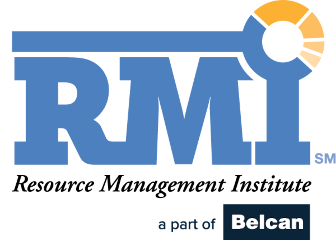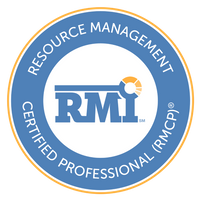At its core, resource management is all about understanding the pool of talent at your company and making sure they are put to good use. But in practice, it can be much more challenging.
Incoming projects with shifting start dates, specific skill requirements, competing internal priorities, unexpected project overruns, and many more complicating factors mean that managing your teams effectively takes hard work. Throw in constantly changing client demands, and it can be easy for managers to fall into a practice of reactive resource management – a tendency to only manage teams in the moment, solving today’s problems, instead of planning out assignments and utilization far enough into the future to prevent major problems from occurring.
Although there will always be a need for sudden reassignments and quick changes in priority when the unexpected occurs, a persistent reactive resource management mentality will limit the potential of any professional services organization. It is imperative that businesses have a rubric for finding answers to the following questions: Are existing processes forcing resource managers to be reactive instead of proactive? How is this impacting your profits and long-term growth? What changes need to be made to enable resource managers to get on the front foot and consistently address upcoming demands proactively? Knowing the answers to these questions can make a big difference to your company’s bottom line and ability to scale over time
The Effects of Reactive Resource Management
Great resource managers know how to respond to sudden and unexpected changes in business demands, but when this becomes the de facto way of managing a team, any notion of being able to work to plans or processes is lost.
Effective resource management focuses on a long-term strategy that keeps team members well utilized and furnished with clear cut assignments that help them move smoothly from project to project. In contrast, reactive resource management puts project and client needs first, which often requires throwing resources at projects with little notice, disrupting schedules, and creating both confusion and burnout in teams. This may help meet sudden needs and keep demanding clients happy, but the negative effect on your team members can be massive.
In addition, resource management decision-makers are often put in situations where they don’t have the time, the solutions, the visibility, or the confidence in data they need to be able to build and act on long-term plans for the business. Even where upcoming skills gaps can be seen, no one trusts the data enough to pull the trigger on necessary measures like hiring or training, and processes and priorities in a reactive organization don’t allow needed conversations to happen until it’s already too late. The business ends up addressing the skills gap only when it’s already creating turbulence for clients and project managers.
Maybe the biggest negative effect of reactive resource management is that it perpetuates a cycle that can be extremely difficult to break. Once a company begins dedicating all of their focus and resources to only today’s pressing needs, every day afterward can’t help but focus on the present and not the future. After all, how can your business become truly future-focused if urgent needs take up all of people’s time and energy?
It’s not impossible to break out of this reactive cycle once your business is caught in it, but doing so will take effort and dedication to a new way of doing business.
Creating Proactive Resource Management
Successful professional services companies aren’t just responding to the moment, they are looking toward the future, ensuring there is a pathway to success for the business in the coming weeks and months. This is proactive resource management and it enables businesses to accurately scale and take on the right projects.
There are several crucial elements that every company should have to be proactive in its resource management. These are:
Demand Forecasting: Decision-makers need to be able to confidently anticipate future demand on your business, from weeks to months in advance, in order to scale your business as needed and plan for the skills and time that every future project needs.
Well-Managed Project Pipeline: The transition from closing a sale to starting a project can be tricky, especially if your departments aren’t synchronized properly. Align your project managers with your sales team and you will be able to create accurate timelines and resource assignments farther in advance.
Strong Contract Worker Network: Contract workers are more important than ever in handling project demands – they enable you to access the exact skills you need, when you need them, without creating a full-time team that doesn’t quite match daily project needs. Having strong connections and clear communication will create a networked economy that will be there for you.
Clear Resource and Project Visibility: Making the right decisions about which resources are right for which projects requires clear lines of sight into not just your pipeline, but also into every project across your entire project portfolio. You won’t truly understand current and future resource availability without understanding how day-to-day work is progressing and what that means for when resources will be able to roll off of current assignments.
Flexible, Easy-to-Use Resource Management Solution: Great modern resource management software solutions provide fast and easy-to-use methods for reassigning resources, changing schedules, and shifting timelines when the need emerges. If your current resource management solution is inflexible or too complex, it can eat up too much time to implement changes, especially if someone outside of the resource management organization needs to review and adjust staffing plans. Your company will need to adopt a solution that is flexible, intuitive, and straightforward to help not just resource managers, but your entire organization build and adjust plans that ensure long-term success. In addition, these user-friendly resource management tools can help companies align around the resource management organization.
Together, these elements will provide a business with insights into the future that they can confidently incorporate into more accurate plans, as well as still have the flexibility needed to respond to sudden changes as they arise. Both of these are possible with the right solutions and mindsets in place.
Ryan Montano is a technology professional with a passion for Product Management, Product Marketing, and Product Development. His areas of focus include B2B SaaS, Project Management, Analytics, Machine Learning, Artificial Intelligence, UI/UX design, and Startup Ventures. Ryan has spent nearly a decade in product development working closely with R&D and marketing teams on long-term strategic planning. This has allowed him to help shape countless key technology features and requirements that capture the essence of product value for clients.





